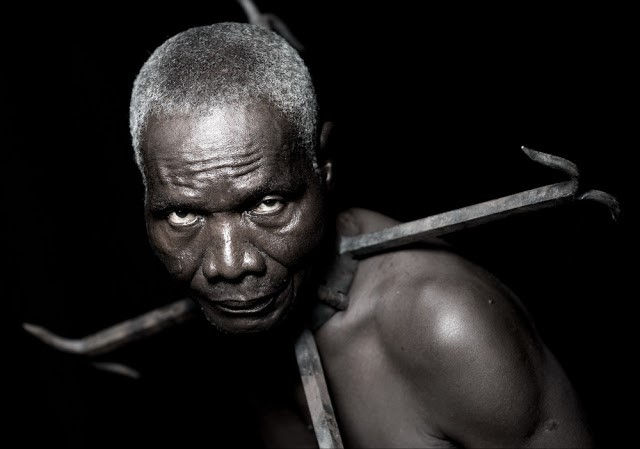Africa Nossa and Its Spirit of Survival or The Uncomfortable Truth of the Iron Mask
- narminasadova
- 15 авг. 2015 г.
- 2 мин. чтения
“They say that somewhere in Africa the elephants have a secret grave where they go to lie down, unburden their wrinkled gray bodies, and soar away, light spirits at the end.”
Robert McCammon, Boy's Life
Everyone is a photographer nowadays. Anyone who has a camera in his hands, a bit of simulated motivation and a lot of spare time calls himself a photographer. And unquestionably living in a democratic society has taught us to expect an inevitable acceptance when, for instance, shooting in public space. But it doesn't work like that everywhere.
It is not easy to be a photographer in Africa, claims Belgian-Beninese photographer Fabrice Monteiro in one of his interviews. An emerging artist working in the fields of photojournalism, fashion photography and portraiture, outlines that besides getting an authorization that certainly takes forever, such an unexpected thing as animism could also affect and intercept the process of shooting. For example, in his homeland Benin, which is often called the cradle of voodoo(meaning "spirit" in the local language), they strongly believe that if you take pictures of people you are actually taking away their souls.
The former model turned photographer, Fabrice Monteiro, says "Slavery is a part of my own history". Sensitive to this issue, he creates Marrons, a photographic reenactment of the biggest terrors of slavery- shackles. Shot in the village of Benin, Ouidah, where his family originates(Portuguese surname Monteiro is the slave name given to his ancestors who were taken to Brazil, they were later freed and returned to Benin, but kept their master's name)these contemporary portraits tell a story about runaway slaves, called Marrons (borrowed from Spanish "cimarrons"), who had formed their own communities and were a terrible threat to the whole colonial system. But those slaves who were eventually caught, underwent severe punishments, which included wearing heavy muzzles, iron masks, iron necklaces with long stalks or with bells.
Treating the subject in an anthropological way, the savage devices were based on historical documentation and built as close as possible to the original ones. "See, this is what we are able to do to our equals in the name of nothing but money. Racialism and later racism were nothing but alibis to justify that treatment", declares the artist.
When I first saw the work of Monteiro, I was deeply shocked and saddened. What affected me more were the models. Referring to the artist, during the photo-shoot none of them needed any direction or words, as soon as they tried the shackles, they knew what to do.
Mae Africa, ta ser feliz um dia (Mother Africa will one day be happy) prays my beloved Cesaria Evora in her immortal song Africa Nossa (Our Africa) that is playing in the background, while I am finishing this post. Just like Evora's song and her deeply hypnotizing voice, the works of Fabrice Monteiro, carry the weight of history and traditions of this exceptional continent. The native rhythms and the bright sky, the voodoo dancing and the mystic trances, the infinite faith and the childish naivete, the surreal love and the compassionate elephants, fertility and environmental devastation, unconditional pain and violence, oppression and the sealed fates of eternally light yet strong spirits.
FP




















Photo credit: http://fabricemonteiro.viewbook.com/

Комментарии